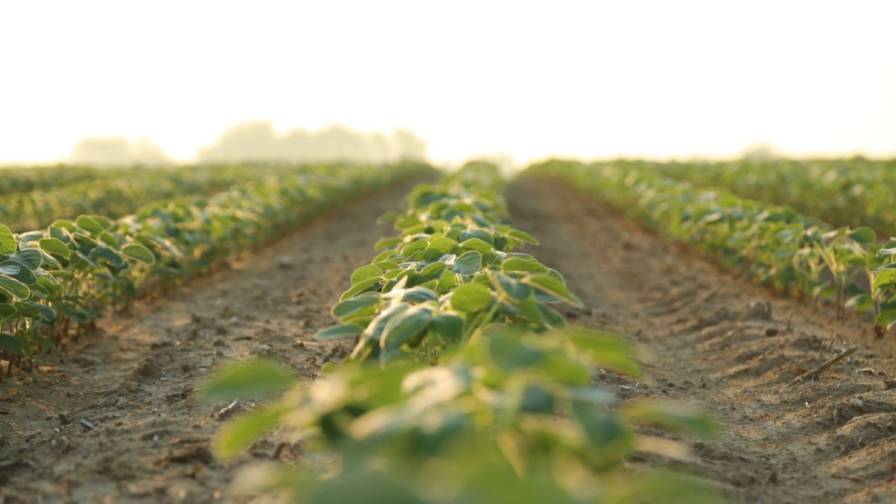MACA Panel: Agriculture – Then and Now
There are few people who make their living from agriculture that would argue that the past few decades have seen lightning-speed changes taking place across the entire industry. And market watchers can expect more such changes to happen as the upcoming growing seasons unfold.
This was the overriding message related to attendees at the 2023 Mid America CropLife Association (MACA) annual meeting, held in early September in Indianapolis, IN, from a three-person panel of industry representatives.
“One thing we can all agree upon is that the market is shifting,” said Kurt Coffey, Vice President for Case IH North America. “The trick for everyone in this room is to be aware and see the shift.”
To emphasis his point, Coffey cited a pair of examples of companies – one that had missed the shift in its industry and another that had actually kicked it off. “Kodak was a big producer of film and the company invented digital picture technology, but it didn’t want to hurt its film business, so Kodak let other companies develop digital instead. They got buried!
“And the other hand, Netflix pioneered sending DVDs through the mail,” he continued. “But when they realized digital films were the future, they quickly moved their business model to this area, and thrived.”
Moving the focus back to agriculture, Ben Koehler, Vice President, National Accounts at Corteva Agriscience, reminded MACA attendees that dealing with pressure is part of this business. “I think 2023 is an incredibly unique year – not necessarily in a pleasant way,” said Koehler. “And I think 2024 will once again be another unique year. If you don’t feel a little pressure about what’s coming for 2024, I would be shocked.
“Mother Nature is a really tough competitor,” continued Koehler. “Twenty years ago, nobody had heard of marestail or waterhemp. Now, these are all we talk about. And 20 years from now, it will probably be some new crop pests to be managed. At Corteva, we continually have to have new products and innovations coming out – things that will be problem solvers for our customers in the future.”
Of course, part of the problem for Corteva and other crop protection product companies is not necessarily introducing new products, said Koehler. It’s keeping the ones they already have available to customers.
“This is a huge challenge for all suppliers,” he said, citing numerous examples of older chemistries having their labels ultimately rescinded. “We worry about this all the time.”
Like other companies in the industry, Corteva has attempted to educate legislators and the public-at-large about the benefits agriculture and the products its uses to produce crops provide to everyone. “As an old established company, we need to think about how we’ve done things in the past and change them as our customer base – and the customers they deal with – evolve,” said Koehler. “We can all agree that the marketplace is going to continue to evolve and change.”
Rob Clayton, Senior Vice President of Retail North America at Nutrien Ag Solutions, agreed with Koehler’s view on how agriculture has changed over the past few decades. “One of the biggest challenges we face is farming has changed so much,” said Clayton. “Now, it’s all about science.”
As an example of this, Clayton told MACA attendees about his 20-plus years in the business. “I think about 20 years ago during my early days in agriculture,” he said. “Back then, I was told ‘don’t worry about the soil. Soil is just there to hold up the crops.’ But now, everyone talks about the importance of soil science. That’s been a real revolution. When I came into agronomy, it was all about chemistry – kill the bug, kill the weed. In the 1980s, 1990s, and into today, it became all about plant genetics and soil science.”
This “science revolution” has had a profound impact on agricultural practices ever since, said Clayton – including in the area of sustainability. “In 1999 in Australia where I’m from, we sprayed the cotton in our area 16 times per season,” he said. “But in 2021, when Bollgard Cotton came out, we sprayed maybe three times that year.
“Since I’ve become an agronomist, between 1999 and today, in cotton, we’ve seen a 94% reduction in chemistry use,” he continued. “So, sustainability has been around a lot longer than some people realize. And soil science is the future – what we can do to make the plant stronger. That’s my view.”
Besides soil science, Case IH’s Coffey also predicted that ag technology would grow in importance as the industry moves forward. Indeed, the marketplace is already witnessing plenty of artificial intelligence systems and autonomous vehicles debut.
“Technology is everywhere today,” he said. “We need to embrace it, to make our operations better and the sustainability options for our customers.”
But according to Nutrien’s Clayton, more ag technology will likely change who the industry needs to employ in the future. “How do we get the ‘best of the best’ into agriculture?” he asked. “We can get people who’ve grown up on the farm to come aboard, but for really tech-minded people, we are competing with the Googles and Microsofts of the world for city dwellers.”
However, Clayton did offer an idea for how this could be accomplished. “We need to sell these kinds of people on the fact that we are an industry that makes a difference in the world, that feeds the planet,” he said. “Today’s young people like to feel they are making a difference with what they do with their careers, and the only industries that do this are medicine and agriculture.”






